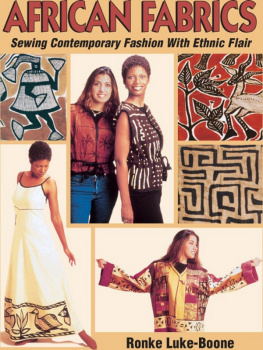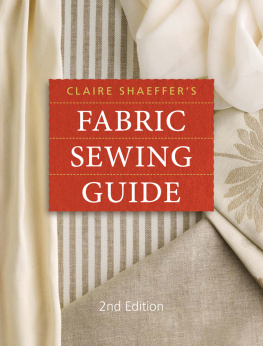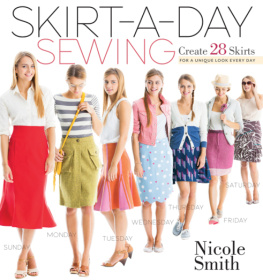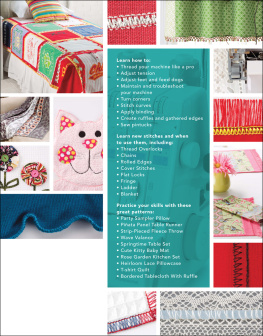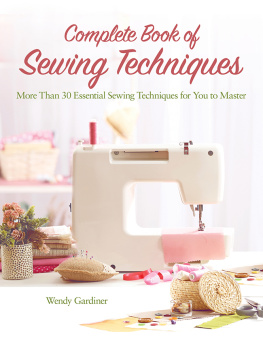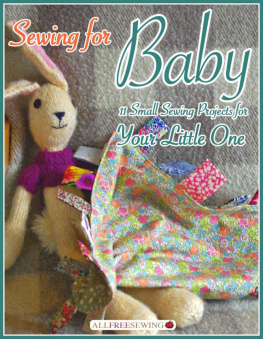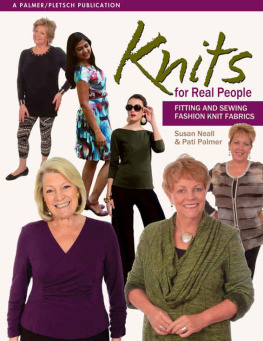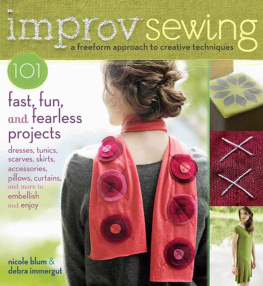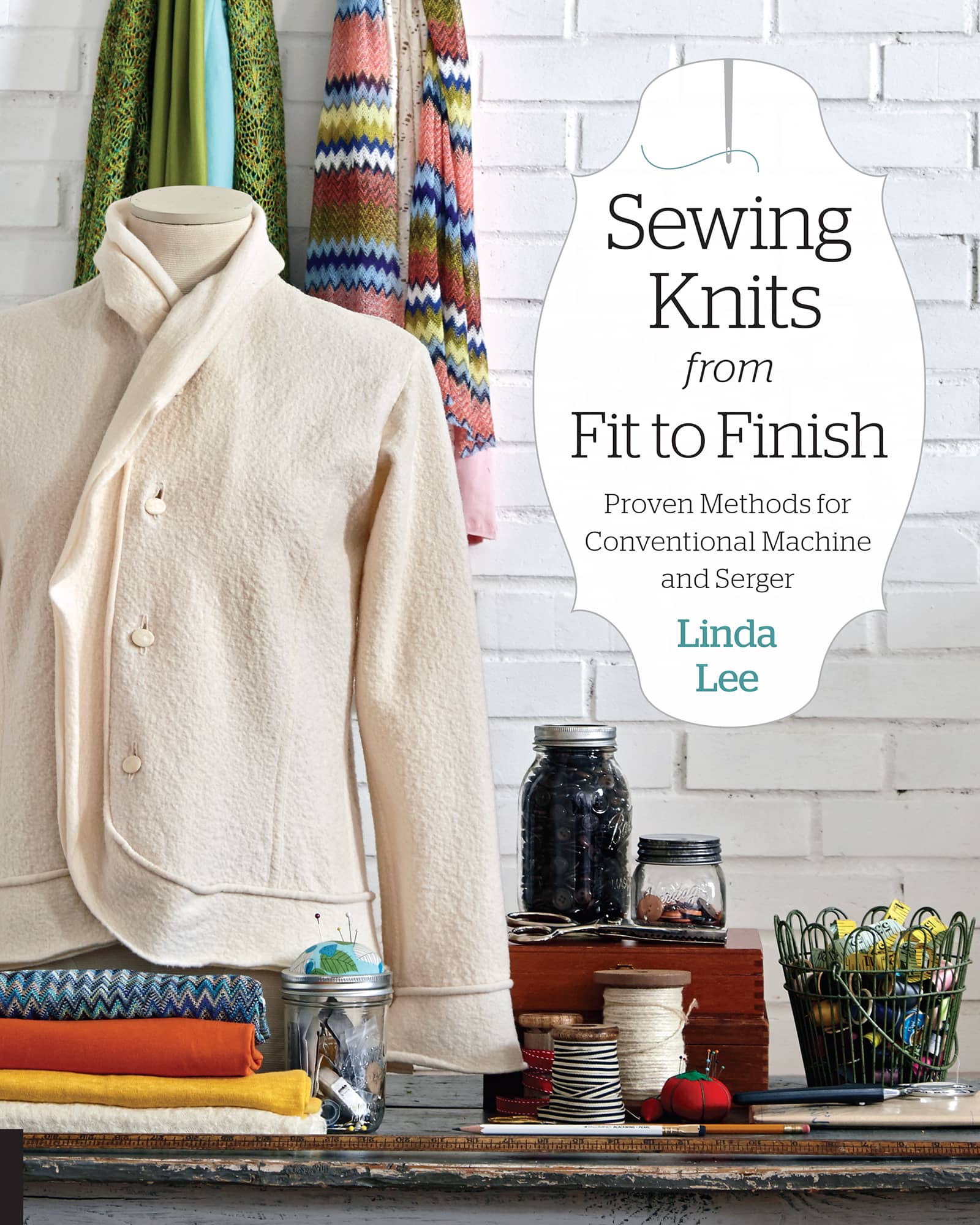Dedication
The future of sewing is in the hands of my daughters generation. To Alex, who will help carry the industry forward.

2018 Quarto Publishing Group USA Inc.
First published in 2018 by Creative Publishing international, an imprint of The Quarto Group,
401 Second Avenue North, Suite 310, Minneapolis, MN 55401, USA.
T (612) 344-8100 F (612) 344-8692 QuartoKnows.com
All rights reserved. No part of this book may be reproduced in any form without written permission of the copyright owners. All images in this book have been reproduced with the knowledge and prior consent of the artists concerned, and no responsibility is accepted by producer, publisher, or printer for any infringement of copyright or otherwise, arising from the contents of this publication. Every effort has been made to ensure that credits accurately comply with information supplied. We apologize for any inaccuracies that may have occurred and will resolve inaccurate or missing information in a subsequent reprinting of the book.
Creative Publishing international titles are also available at discount for retail, wholesale, promotional, and bulk purchase. For details, contact the Special Sales Manager by email at or by mail at The Quarto Group, Attn: Special Sales Manager, 401 Second Avenue North, Suite 310, Minneapolis, MN 55401, USA.
Digital edition: 978-1-63159-359-8
Softcover edition: 978-1-58923-938-8
Digital edition published in 2018
Library of Congress Cataloging-in-Publication Data
Names: Lee, Linda, 1948- author.
Title: Sewing knits from fit to finish : proven methods for conventional
machine and serger / Linda Lee.
Description: Beverly, MN : Creative Publishing international, 2018. |
Includes index.
Identifiers: LCCN 2017043875 | ISBN 9781589239388 (paperback)
Subjects: LCSH: Machine sewing. | Knit goods. | BISAC: CRAFTS & HOBBIES /
Sewing. | CRAFTS & HOBBIES / Fashion.
Classification: LCC TT715 .L445 2018 | DDC 646.2/044--dc23 LC record available at https://lccn.loc.gov/2017043875
Design, Layout, and illustration: Mattie Wells
Photography: Glenn Scott Photography; except for Lisa Pickel (Blakley), Bliss Studios on pages

Sewing Knits
from Fit to Finish
Proven Methods for Conventional Machine and Serger
Linda Lee

Preface
In the 1980s, I owned a retail fabric store in Topeka, Kansas, called threadWEAR. We specialized in high-fashion fabrics of all kinds. I remember that we usually had only one knit fabric to offercotton interlock in just a few colors. That was it! I never saw much in the way of knits to buy, no one asked for them in the store, and I sure didnt sew with them.
Thirty years later, its a rare day when I dont sew on a knit fabric, my wardrobe is full of knit garments, and the variety of knit fabrics available to the home sewer is enormous. Of course, there is still cotton interlock, but with viscose in all its forms, polyester in prints and solids, and novelty textures and open weaves galore, the world of sewing knits has opened to the garment sewer as no other time in history.
Sewing Knits from Fit to Finish is a comprehensive look at this world of knits. You will learn how to identify the types of knit structures, the different fibers and fiber blends found in modern knits, and the best uses for each of them. How to prepare patterns with good fitting techniques is covered in depth. All of the best sewing and serging techniques for the best seam and hem choices are also included. You will learn how to apply various neck finishes, insert a sleeve, make perfect buttonholes, sew darts, and even how to sew activewear and lingerie.
Its time to sew what you love to wear and make it as professionally as you possibly can. Sewing Knits from Fit to Finish will be your go-to resource for tackling the sometimes intimidating prospect of sewing with knit fabrics.
1
Know Your Knits
Other than the singular common characteristic of all knitsthat they stretchthe variety of knits available today is staggering. Some knits stretch very little, while others stretch more than you can imagine. From smooth and lustrous to loopy and bulky, the range of fibers, textures, and looks is alluring. Your sewing will be enhanced once you learn more about the types of knits manufactured today.
Characteristics of Knits
Although the variety of knit fabrics is tremendous, they all share, to some degree, the same characteristics. Knits dont ravel, they generally dont wrinkle, they do tend to shrink, and they all stretch, some a little and some a lot. These characteristics make knit fabrics fun (and usually quick and easy) to sew and very comfortable to wear.
Ravel Resistance
Due to the interlocking construction of knits, they do not ravel. This means that it is not necessary to finish the raw edges either inside or outside the garment, which simplifies construction, saves time, and minimizes bulk along the seams and hems.
Many knits look good with simple, smooth, and unfinished cut edges. However, novelty knits, such as sweater knits, have ragged edges that are not as attractive, so edge finishing might be necessary on these specialty knits.
Wrinkle Resistance
Most knits are wrinkle resistant, but their particular fiber content and construction technique does determine the degree of wrinkling. Viscose rayon and bamboo knits tend to wrinkle, sometimes badly, while polyester and nylon are nonwrinkling fibers. ITY (interlocking twist yarns) and textural constructions prevent wrinkling, as well.
Shrinkage
Some knits shrink dramatically, others very little. Most knits tend to shrink more than woven fabrics. See for a way to determine how much your particular fabric will shrink.
A bamboo knit (foreground) and an ITY knit.
Stretch and Recovery
Knits stretch in varying degrees from almost no stretch to 100% beyond their original (prestretched) size, depending on the construction technique, fiber types, addition of elastic fibers (such as spandex), and surface finishes. Recovery, or the way the fabric springs back to its original size after stretching, is important, too. Garments made from knits with good recovery tend not to sag, bag-out, or lose their shape. Some knits are very stable, with little stretch, and can be sewn just like a woven fabric.


